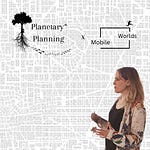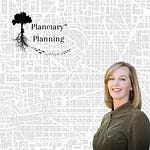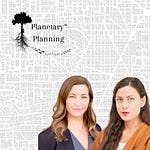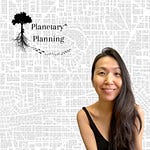In this episode, Edda Bild shares insights on human and more-than-human sounds, and which of these are considered more positively, versus which tend to be considered “noise”. Edda currently works as post-doctoral research associate at the Institute for Work and Health in Toronto, Canada, where she focuses on topics around occupational health and safety, like the newcomer experience in the workplace, small businesses and psychological health and safety. She also continues her work as a post-doctoral soundscape researcher and an ambassador of the Sounds in the City team at McGill University. She works on the hearing modality, the broader urban sensory experience, and its implications for urban practice, and has now shifted focus to encouraging sound awareness and education. She is passionate about knowledge transfer and turning research into meaningful interventions and practices.
In the episode, we discuss the difference between noise and sound, and which human and more-than-human sounds are more or less considered as noisy. Humans seem to tend to like hearing the sounds of other humans (though not all of their sounds), of birds chirping, and of various “urban waters”, while machines such as cars or construction are often considered only as noise (negative). However, as we discuss towards the end, there are also political policy decisions regarding for example which noises should be tolerated for public purposes even when they are not considered pleasant (e.g. public transportation versus private cars). Edda shares several examples of how sound matters in public spaces (including inside buildings and transportation), and how it is most commonly approached in planning: as noise, that is, as primarily problem. She shows how this makes sense, but that sound is also more complex than staying below 80 decibels to avoid noise, and that sound co-habitation must take many perspectives into account. She also shares some insights on the ways human sound has affected more-than-humans both in (urban) public spaces and under water (referring e.g. to the field of Bioacoustics, see reference below). We end on her take-aways for planners (see below) and on how the theme of sound, like most themes planners work with, have important political implications - e.g. in defining where which sounds are to be permitted, which beings protected from which noises, and so forth. Sound is political.
Take-aways for planners, by Edda Bild
Place more emphasis on genuine communication: when you talk, make sure the messages are simple and / or straight-forward enough for the various audiences involved
But do not only talk. Good communication is also about keeping an “open ear”. That is: make sure to listen, be considerate and attempt to understand various perspectives. (For some hints for how to “listen” to more-than-humans, see for instance the episode with Emilija Vaselova or the one with Jonathan Metzger)
Sound is one more element on the list of many that planners need to look out for, but this is why collaborating cross-disciplinarily is key in planning.
References and resources
Bild, E., Steele, D., & Guastavino, C. (2024). Supporting the Living Laboratory: A Literature Review of Montreal Sound-Related Research. Journal of Planning Literature, 08854122241266816. https://doi.org/10.1177/08854122241266816
Corbin, A., & Corbin, A. (1986). The foul and the fragrant: Odor and the French social imagination. Harvard University Press.
Di Croce, N., & Bild, E. (2024). How do urban policies shape atmosphere? A multimethod inquiry of the sonic environment. Urban Research & Practice, 17(3), 416–437. https://doi.org/10.1080/17535069.2023.2232344
Mitchell, A. (2022) Bioacoustics: What nature’s sounds can tell us about the health of our world. Canadian Geographic.
Ross, A. (2024) What is Noise? The New Yorker.
Stamm, C., Bild, E., Tarlao, C. and Guastavino, C. (2024) ¿Por qué deberías preocuparte por lo sonoro? Instituto de Estudios Urbanos y Territoriales. Pontifica Universidad Católica de Chile.
Steele, D., Bild, E., & Guastavino, C. (2023). Moving past the sound-noise dichotomy: How professionals of the built environment approach the sonic dimension. Cities, 132, 103974. https://doi.org/10.1016/j.cities.2022.103974
Thompson, E. A. (2008). The soundscape of modernity: Architectural acoustics and the culture of listening in America, 1900 - 1933 (1. paperback ed., [Nachdr.]). MIT Press.
Trudeau, C., Steele, D., & Guastavino, C. (2020). A Tale of Three Misters: The Effect of Water Features on Soundscape Assessments in a Montreal Public Space. Frontiers in Psychology, 11, 570797. https://doi.org/10.3389/fpsyg.2020.570797
Other podcasts discussing Sound (as a key theme or on occasional episodes):
The Rest is Just Noise Podcast
Sound Matters Podcast
Crossing City Limits Podcast with episode with Edda on Quebec sound










